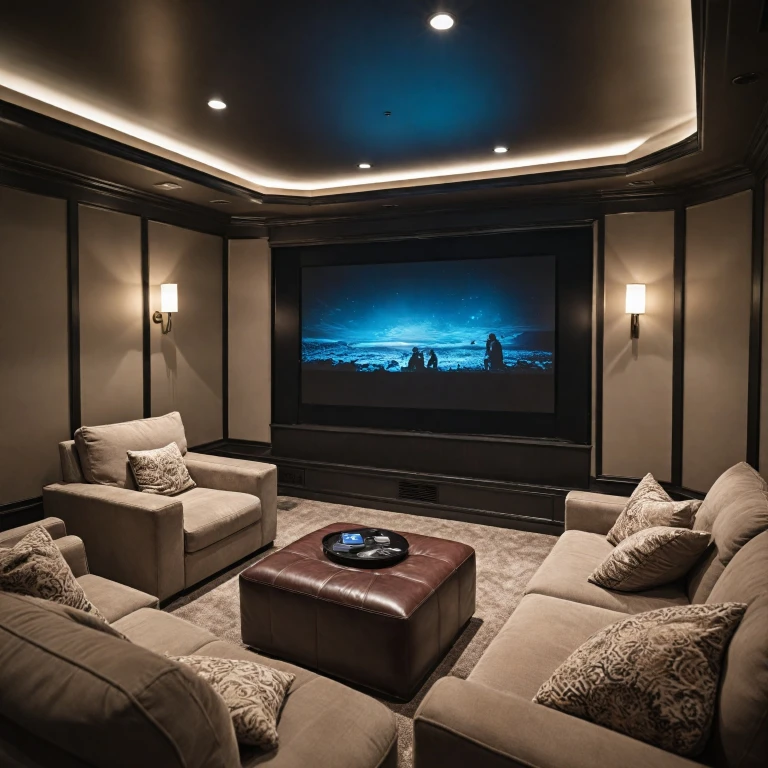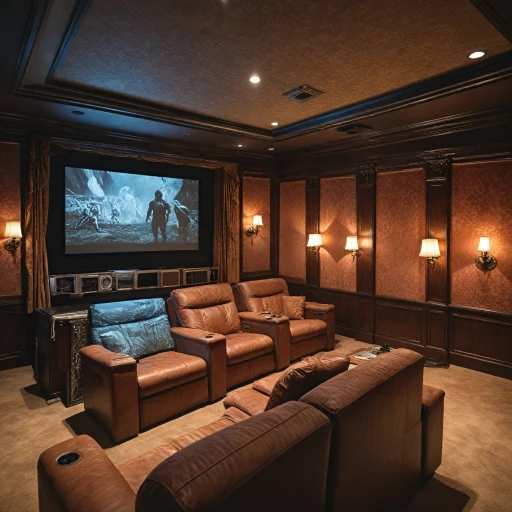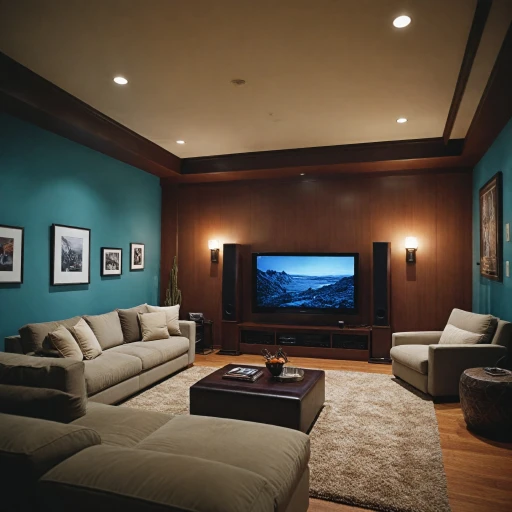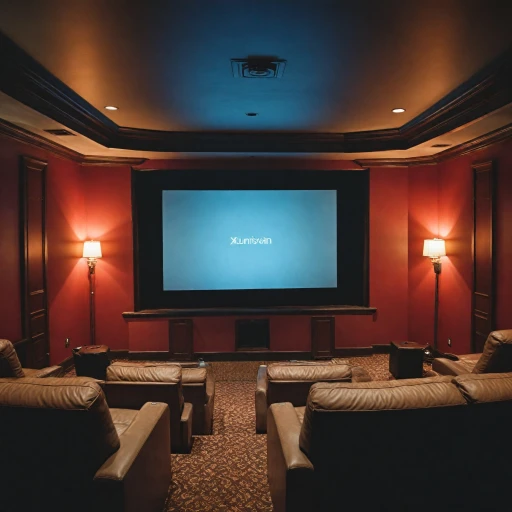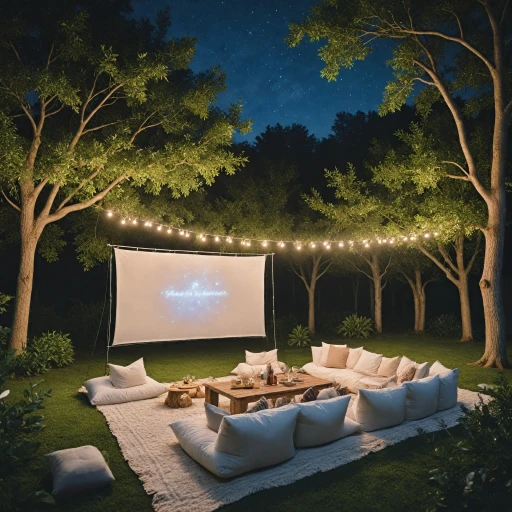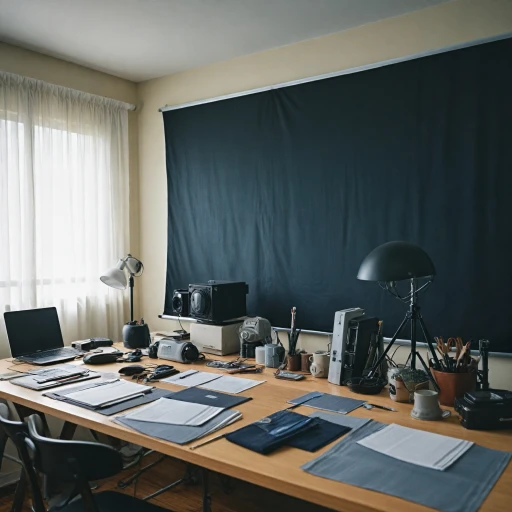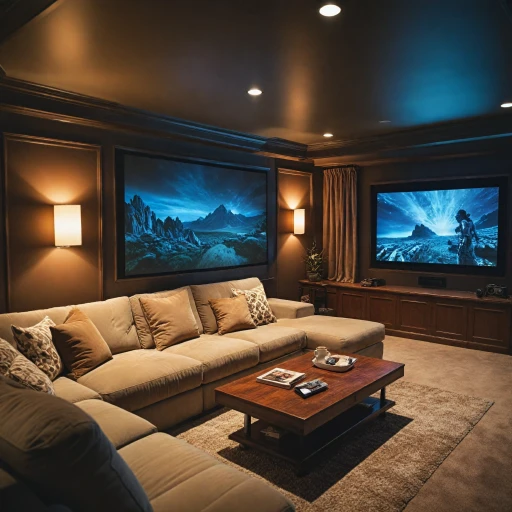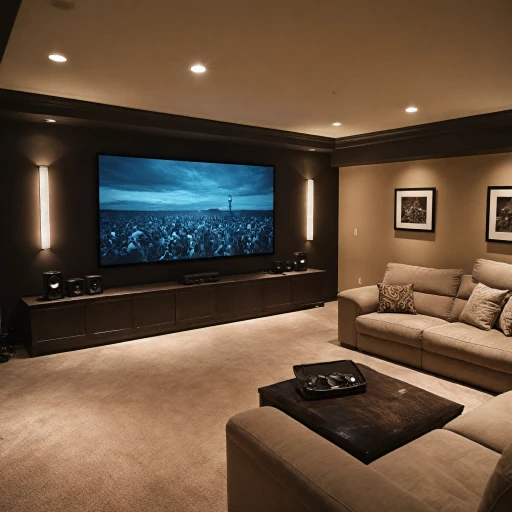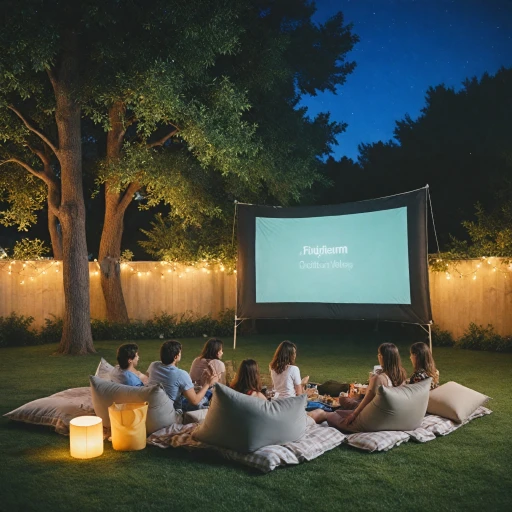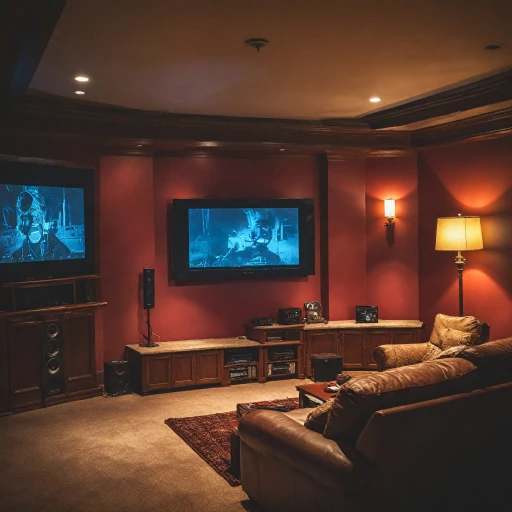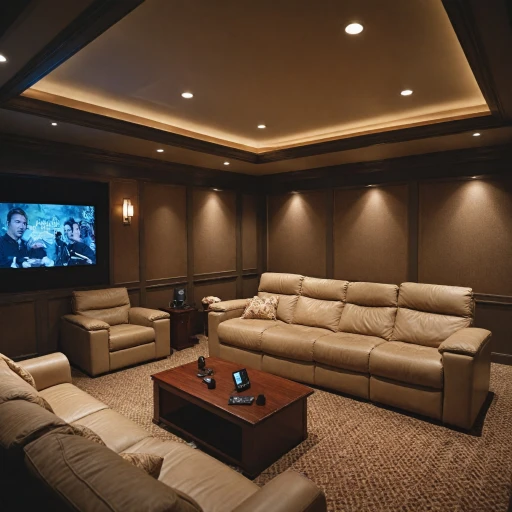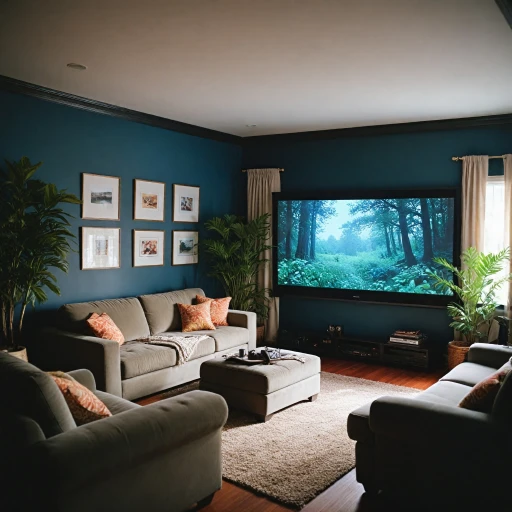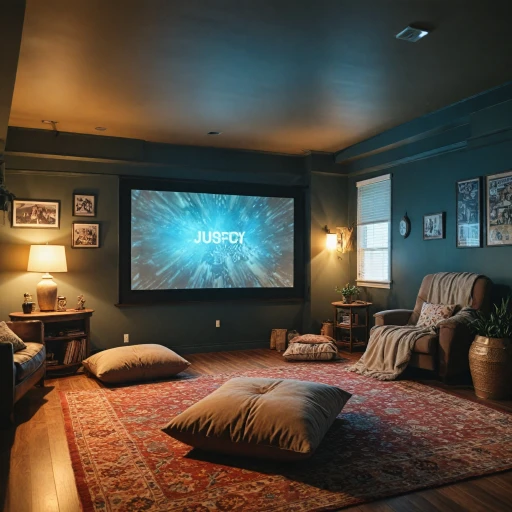
Understanding Blackout Cloth Projector Screens
Exploring the Basics of Blackout Cloth Screens
When setting up a home theater, the choice of screen material is crucial for achieving the best image quality. Blackout cloth projector screens have become a popular choice among enthusiasts for their ability to enhance the viewing experience. This type of screen is made from a special fabric designed to block out ambient light, ensuring that the projected image remains vibrant and clear.
Blackout cloth is typically used in window treatments to prevent light from entering a room, making it an ideal material for projector screens. Its unique properties allow it to provide a high-contrast surface that enhances the colors and details of your favorite movies. Whether you're setting up a permanent home theater or a portable outdoor movie screen, blackout cloth can be a versatile and cost-effective solution.
For those interested in choosing the best outdoor projector screens, blackout cloth offers a durable and reliable option. Its ability to withstand various lighting conditions makes it suitable for both indoor and outdoor use, providing flexibility for different viewing environments.
In the following sections, we'll delve into the benefits of using blackout cloth, offer installation tips, and compare it to other screen materials. Understanding these aspects will help you make an informed decision when selecting the right screen for your home theater setup.
Benefits of Using Blackout Cloth for Projector Screens
Why Choose Blackout Cloth for Your Projection Needs?
When setting up a home theater, the choice of screen material can significantly impact your viewing experience. Blackout cloth projector screens offer several advantages that make them a popular choice among enthusiasts. Here’s why you might want to consider this option for your setup:
- Enhanced Image Quality: The blackout fabric is designed to block out light, ensuring that the projected image remains vibrant and clear. This is particularly beneficial in rooms with ambient light, where maintaining image quality can be challenging.
- Cost-Effective Solution: Compared to other screen materials, blackout cloth is often more affordable, making it an excellent choice for those looking to save on their home theater setup without compromising on performance.
- Versatile and Portable: Blackout cloth screens are lightweight and easy to transport, making them ideal for both indoor and outdoor movie nights. Whether you’re setting up in your living room or planning an outdoor movie event, this material offers the flexibility you need.
- DIY Friendly: For those who enjoy DIY projects, blackout cloth is a great material to work with. You can easily create a custom-sized screen that fits your specific needs, whether it’s a small setup for a cozy room or a large screen for a more immersive experience.
- Durability: The robust nature of blackout fabric means it can withstand regular use without showing signs of wear and tear. This durability ensures that your investment will last for years to come.
For those interested in exploring more about portable options, consider checking out inflatable screens for projectors as an alternative. These can offer additional flexibility for outdoor settings.
Installation Tips for Blackout Cloth Screens
Simple Steps for a Perfect Setup
Installing a blackout cloth projector screen can transform your theater experience, and with the right approach, it's quite accessible even for DIY enthusiasts. Here's a straightforward guide to help you set up your own blackout cloth screen, ensuring optimal image quality and an immersive viewing experience.
Firstly, measure your projector screen size. This step is crucial to determine how much blackout fabric you'll need and to ensure it fits well within your selected item or room. Be precise with your measurements to avoid future adjustments, which can deal unnecessary stress to your project.
Next, assemble a frame for your blackout screen. You can use wood or metal as your frame material, depending on your budget and structural preferences. While wood offers an economical price point, metal provides a sturdier base. Make sure to check out materials available locally to save select costs.
Once you’ve constructed your frame, stretch the blackout cloth tightly across it. This is where the magic happens, as a taut cloth ensures the highest image quality by maintaining a flat and wrinkle-free surface. Secure the cloth using staples or a fabric adhesive, checking periodically that the fabric remains evenly distributed.
To enhance the visual experience, consider the placement of your projector screen within the room. Position the screen away from window light sources to minimize interference from ambient light. This step will emphasize the contrast and color depiction on your projector, giving you the best theater experience possible.
If portability is a priority, consider creating a collapsible frame for easy mobility. This approach makes it possible to transform virtually any space, indoor or outdoor, into a personal movie theater. It's particularly convenient for those looking to set up a temporary home theater in various rooms or even for inflatable movie nights outdoors.
Finally, remember to keep an eye out for a good deal on mounting options, as a secure mount enhances the stability and visual appeal of your setup. With these steps, you'll be able to enjoy your favorite films in the comfort of your living room, without the expense of traditional projector screens.
Comparing Blackout Cloth to Other Screen Materials
Examining Alternatives to Blackout Cloth
- White Matte Screens: Often found in professional settings, white matte screens deliver consistent image quality across various lighting conditions. They are ideal for rooms where ambient light can be controlled.
- Gray Screens: Designed to enhance contrast in spaces with more ambient light, gray screens offer a balanced image quality, particularly when projecting in a living room setting.
- Glass Beaded Screens: Known for their enhanced brightness, these screens work well with portable projectors in dedicated theater setups. However, their brighthness makes them less suitable for rooms with low ceilings due to potential hotspotting.
- Fiberglass Screens: Extremely durable, fiberglass screens are a practical option for those who seek a robust, long-lasting solution. They withstand regular wear and can be suitable for outdoor movie nights or portable setups.
- Inflatable Movie Screens: For those who prioritize portability and ease of setup, especially for outdoor movie events, inflatable choices like the vevor inflatable offer a fun, creative solution for an enjoyable projection experience.
- DIY Solutions: Using everyday materials, DIY enthusiasts can craft personalized solutions with blackout fabric or cloth. However, success varies depending on expertise level and desired image fidelity.
Maintenance and Care for Blackout Cloth Screens
Keeping Your Screen in Top Shape: Essential Maintenance Tips
Taking good care of your blackout cloth projector screen will enhance the lifespan and performance of your home theater setup. Here's how you can ensure your screen remains in pristine condition:- Regular Cleaning: The fabric of blackout projector screens can easily attract dust and dirt, affecting image quality. Clean your screen regularly with a soft, lint-free cloth. Use a gentle vacuum with a brush attachment to remove any accumulated dust on the screen surface.
- Avoid Moisture: While blackout fabric is robust, excessive moisture can cause damage over time. Make sure your projection screen is dry and installed in a well-ventilated room to prevent mold or mildew.
- Be Cautious with Direct Light: Although blackout cloths are designed to manage ambient light, prolonged exposure to direct sunlight can fade the material. For a more permanent setup, it's best to position your screen away from direct window light, or consider using blackout curtains in the room.
- Careful Handling: If you're using a portable or inflatable movie screen, handle it with care to avoid creases or tears. When not in use, store the screen rolled up, if possible, to prevent wrinkles that could affect the integrity of the projected image.
- Check for Structural Integrity: Regularly inspect the frame supporting your blackout cloth to ensure it remains secure. If you detect any wobbling or looseness, tighten any screws or joints to keep your projector screen stable for a sharper movie screen experience.
